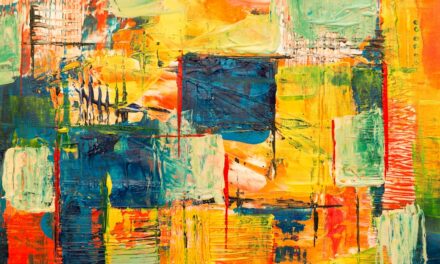Animation, as a digital art form, represents a unique intersection of creativity and technology, where visual storytelling comes to life through the manipulation of images. At its core, animation is the process of creating the illusion of movement by displaying a series of individual frames or images in rapid succession. This art form transcends mere entertainment; it serves as a powerful medium for expression, allowing artists to convey complex narratives, evoke emotions, and explore abstract concepts.
The digital realm has revolutionised animation, enabling artists to harness sophisticated software and tools that enhance their creative capabilities, streamline workflows, and expand the possibilities of visual storytelling. In the digital age, animation has evolved into a multifaceted discipline that encompasses various styles and techniques, from traditional 2D hand-drawn animations to cutting-edge 3D computer-generated imagery (CGI). This evolution has not only broadened the scope of what can be achieved artistically but has also made animation more accessible to aspiring creators.
With the advent of user-friendly software and online tutorials, individuals from diverse backgrounds can now experiment with animation, fostering a vibrant community of artists who share their work and collaborate on projects. As a result, animation has become an integral part of contemporary culture, influencing everything from advertising and video games to film and social media.
Summary
- Animation is a digital art form that brings still images to life through movement and storytelling.
- The history of animation in digital art dates back to the early 20th century, with the evolution of technology playing a significant role in its development.
- Tools and software such as Adobe Animate, Toon Boom, and Blender are commonly used for creating digital animation.
- Techniques and principles such as timing, squash and stretch, and anticipation are essential for creating compelling digital animation.
- Different styles and genres of digital animation include 2D, 3D, stop-motion, and motion graphics, each offering unique storytelling opportunities.
The History and Evolution of Animation in Digital Art
The Ancient Roots of Animation
The history of animation is a rich tapestry woven with innovation and creativity, tracing its roots back to ancient times when early civilisations used sequential images to depict movement. However, the modern era of animation began in the late 19th century with the invention of devices such as the zoetrope and the phenakistoscope, which created the illusion of motion through a series of still images. The introduction of film in the early 20th century marked a significant turning point, leading to the creation of iconic animated characters such as Felix the Cat and Mickey Mouse.
From Traditional Techniques to Digital Animation
These early animations laid the groundwork for what would eventually evolve into a thriving industry. The transition from traditional hand-drawn techniques to digital animation began in earnest in the late 20th century with the advent of computer technology. The 1990s saw a surge in the use of CGI in films, with groundbreaking works like Pixar’s “Toy Story” revolutionising the industry.
A New Era of Creative Possibilities
This shift not only transformed how animations were produced but also expanded the creative possibilities available to artists. As technology continued to advance, so too did the tools and software used for animation, leading to an explosion of creativity in the 21st century. Today, digital animation encompasses a wide array of styles and techniques, from hyper-realistic 3D animations to whimsical 2D illustrations, reflecting the diverse influences and inspirations that shape this dynamic art form.
Tools and Software for Creating Digital Animation

The landscape of digital animation is characterised by an array of tools and software that cater to different artistic needs and preferences. At the forefront are industry-standard applications such as Adobe Animate, Toon Boom Harmony, and Blender, each offering unique features that empower animators to bring their visions to life. Adobe Animate is particularly popular for its versatility in creating both 2D animations and interactive content, making it a favourite among web designers and game developers alike.
Toon Boom Harmony, on the other hand, is renowned for its robust capabilities in traditional frame-by-frame animation and rigging, making it a staple in professional studios. In addition to these established tools, there has been a rise in user-friendly software that caters to beginners and hobbyists. Programs like Moho (formerly Anime Studio) and OpenToonz provide accessible platforms for those new to animation, allowing them to experiment with various techniques without overwhelming complexity.
Furthermore, mobile applications such as FlipaClip have made it possible for aspiring animators to create on-the-go, fostering creativity in everyday settings. The availability of these diverse tools has democratized animation, enabling individuals from all walks of life to explore their artistic potential and contribute to the ever-evolving landscape of digital art.
Techniques and Principles of Digital Animation
Understanding the fundamental techniques and principles of digital animation is essential for anyone looking to master this art form. One of the most critical principles is timing, which refers to the speed at which actions occur within an animation. Proper timing can significantly impact how an audience perceives movement; for instance, a fast-paced action sequence requires quick transitions between frames to convey urgency, while slower movements may benefit from more gradual changes.
Additionally, spacing plays a crucial role in creating realistic motion; animators must carefully consider how objects move through space over time to achieve a believable effect. Another vital technique is the use of keyframes, which are specific frames that define important points in an animation sequence. By establishing keyframes for various poses or positions, animators can create smooth transitions between these points through a process known as interpolation.
This technique allows for fluid movement without requiring animators to draw every single frame manually. Furthermore, understanding principles such as squash and stretch can add depth and personality to characters; this principle involves exaggerating movements to enhance expressiveness and create a sense of weight. By mastering these techniques and principles, animators can elevate their work from simple sequences to captivating narratives that resonate with audiences.
Exploring Different Styles and Genres in Digital Animation
Digital animation encompasses a vast array of styles and genres, each with its own unique characteristics and appeal. From the vibrant colours and exaggerated forms of traditional 2D animation to the intricate details and realism found in 3D CGI, artists have an abundance of choices when it comes to expressing their creativity. One popular style is anime, which originated in Japan and is characterised by its distinctive character designs and storytelling techniques.
Anime has gained immense popularity worldwide, influencing countless artists and leading to a fusion of styles that blend Eastern and Western aesthetics. In addition to stylistic diversity, digital animation also spans various genres that cater to different audiences. For instance, animated films aimed at children often feature bright colours, whimsical characters, and moral lessons, while adult-oriented animations may explore more complex themes through satire or dark humour.
The rise of web series has further expanded the genre landscape, allowing creators to experiment with unconventional narratives and formats that challenge traditional storytelling norms. As animators continue to push boundaries and explore new styles and genres, digital animation remains an ever-evolving medium that reflects contemporary culture and societal trends.
Career Opportunities in Digital Animation

Roles Within the Industry
Aspiring animators can pursue various roles within the industry, including character animators, storyboard artists, visual effects artists, and motion graphics designers. Character animators focus on bringing characters to life through movement and expression, often working closely with directors and writers to ensure that the character’s personality aligns with the narrative.
New Avenues and Emerging Technologies
Moreover, as technology continues to advance, new career paths are emerging within digital animation. For instance, virtual reality (VR) and augmented reality (AR) have opened up exciting avenues for animators to create immersive experiences that engage audiences in unprecedented ways.
Opportunities Across Industries
Additionally, opportunities exist within industries such as gaming, advertising, education, and even healthcare, where animated content is increasingly used for training simulations or patient education materials. With the demand for skilled animators on the rise across various sectors, individuals entering this field can look forward to a dynamic career filled with creative possibilities.
The Impact of Digital Animation on Popular Culture
Digital animation has profoundly influenced popular culture over the past few decades, shaping how stories are told across various media platforms. Animated films have become cultural phenomena that resonate with audiences worldwide; franchises like Disney’s “Frozen” or Pixar’s “Finding Nemo” have not only achieved commercial success but have also left lasting impressions on societal values and childhood experiences. These films often tackle themes such as friendship, family dynamics, and self-discovery while utilising innovative animation techniques that captivate viewers of all ages.
Furthermore, digital animation has permeated other aspects of popular culture beyond film. Television shows like “The Simpsons” or “Rick and Morty” have redefined animated storytelling for adults by blending humour with social commentary. Video games have also embraced animation as a core component of gameplay mechanics and narrative development; titles like “The Legend of Zelda” series showcase how animated elements can enhance player immersion.
As digital animation continues to evolve alongside technological advancements, its impact on popular culture will undoubtedly persist, influencing future generations of creators and audiences alike.
Tips for Getting Started in Digital Animation
For those eager to embark on their journey into digital animation, several tips can help streamline the learning process and foster creativity. First and foremost, it is essential to familiarise oneself with various software options available for animation creation. Experimenting with different tools can help aspiring animators discover which platforms resonate with their artistic style and workflow preferences.
Online tutorials and courses can provide valuable insights into specific techniques or software features that may not be immediately apparent. Additionally, practice is paramount in honing one’s skills as an animator. Creating short animations or participating in challenges can provide opportunities for experimentation while building a portfolio that showcases one’s unique style.
Joining online communities or forums dedicated to animation can also facilitate networking with fellow artists who share similar interests; these connections can lead to collaboration opportunities or constructive feedback on one’s work. Ultimately, embracing curiosity and perseverance will be key drivers in navigating the exciting world of digital animation while continuously evolving as an artist within this dynamic field.
For those intrigued by the digital art technique of animation and keen to explore its artistic roots, a deeper understanding of conceptual art might prove enlightening. Conceptual art, often prioritising ideas over aesthetic form, shares a philosophical kinship with digital animation, which frequently transcends traditional visual boundaries to express complex narratives and concepts. To explore this further, consider reading An Introduction to Conceptual Art, which provides a comprehensive overview of the movement and its impact on contemporary art practices, including digital animation.




